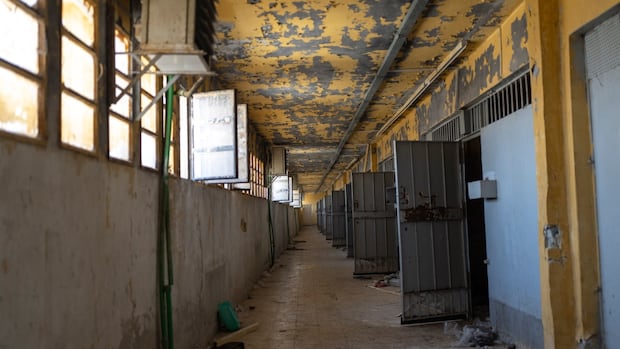While languishing in a prison cell belonging to then Syrian leader Bashar al-Assad, an unidentified prisoner scribbled a verse of Arabic poetry on the wall of his cell – an expression of pain and love in the midst of his torment.
“My country is dear to me, even if it oppresses me. My people are generous even when they are charitable to me,” he wrote. It is a well-known verse written 800 years ago by a poet who opposed a tyrannical caliph.
When you walk through the cold, dark cells of Assad’s prisons, the graffiti on the walls screams. The messages implore God and long for loved ones. They are often mysterious, preserving fragments of what anonymous men thought as they faced torture and death.
“Trust no one, not even your brother,” someone warned darkly on a cell wall at the notorious Palestine Branch detention center in Damascus.
“Oh Lord, bring relief,” groaned another.
Since 2011, tens of thousands of Syrians have disappeared into the network of prisons and detention centers run by Assad’s security forces as they tried to crush his opposition. The prisoners remained incommunicado for years, living in overcrowded, windowless cells where fellow prisoners died around them.
Layers of graffiti mark generations of suffering
Torture and beatings occurred daily. Mass executions were frequent.
Most of the inmates fully expected to die. They had no reason to believe that anyone other than future prisoners would ever see the messages they had carved into the walls.
One wrote a single word in Arabic, “ashtaqtilak” (“I miss you”) – a love letter that could never be sent to a lover whose name only the author would know.
More than a month after the prisons were opened by insurgents who toppled Assad, The Associated Press toured several facilities to see the graffiti left behind. Nothing is known about the men who drew and wrote them.
Only a few have names and only a few are dated. It is impossible to know which of them lived or died.
Layers of graffiti are layered on some walls, marking generations of suffering.
“Don’t be sad, mother. This is my fate,” it says on one dated January 1, 2024. Beneath it are traces of an older text that has faded so much that only a few words can be read: “…. except you.” – a touch of longing for a loved one.
Calendars mark years on the wall
Many of the writings and drawings are cries to parents or loved ones. Someone drew a heart broken in two with “mother” written on one side and “father” written on the other.
Some quote poems. “When you fight your wars, think of those who ask for peace,” says one, slightly misremembering a verse by the Palestinian poet Mahmoud Darwish.
Many kept calendars and filled the walls with number grids. “A year has passed,” was one prisoner’s brief summary over a field of 365 dots arranged in rows.
Some drawings are even playful, such as googly-eyed cartoon faces or a hashish joint. Others are flights of fancy whose meaning was known, if at all, only to the prisoner. One scene shows a landscape of rolling hills and forests dotted with bare trees, where a pack of wolves howls at the sky and a bird of prey grabs a hissing snake in its talons.
Darkness and fear hang over most, along with trying to persevere.
“Patience is beautiful and God is the one we ask for help,” one wrote. “God, fill me with patience and do not let me despair.”


